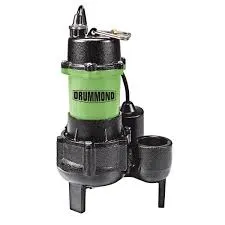English
- Afrikaans
- Albanian
- Amharic
- Arabic
- Armenian
- Azerbaijani
- Basque
- Belarusian
- Bengali
- Bosnian
- Bulgarian
- Catalan
- Cebuano
- Corsican
- Croatian
- Czech
- Danish
- Dutch
- English
- Esperanto
- Estonian
- Finnish
- French
- Frisian
- Galician
- Georgian
- German
- Greek
- Gujarati
- Haitian Creole
- hausa
- hawaiian
- Hebrew
- Hindi
- Miao
- Hungarian
- Icelandic
- igbo
- Indonesian
- irish
- Italian
- Japanese
- Javanese
- Kannada
- kazakh
- Khmer
- Rwandese
- Korean
- Kurdish
- Kyrgyz
- Lao
- Latin
- Latvian
- Lithuanian
- Luxembourgish
- Macedonian
- Malgashi
- Malay
- Malayalam
- Maltese
- Maori
- Marathi
- Mongolian
- Myanmar
- Nepali
- Norwegian
- Norwegian
- Occitan
- Pashto
- Persian
- Polish
- Portuguese
- Punjabi
- Romanian
- Russian
- Samoan
- Scottish Gaelic
- Serbian
- Sesotho
- Shona
- Sindhi
- Sinhala
- Slovak
- Slovenian
- Somali
- Spanish
- Sundanese
- Swahili
- Swedish
- Tagalog
- Tajik
- Tamil
- Tatar
- Telugu
- Thai
- Turkish
- Turkmen
- Ukrainian
- Urdu
- Uighur
- Uzbek
- Vietnamese
- Welsh
- Bantu
- Yiddish
- Yoruba
- Zulu
Telephone: +86 13120555503
Email: frank@cypump.com
Aug . 29, 2024 11:06 Back to list
Slurry Pump Power Calculation
Understanding Slurry Pump Power Calculation
Slurry pumps are critical components in various industries, including mining, mineral processing, and wastewater treatment. These pumps are designed to transport mixtures of liquid and solid particles, referred to as slurries. Calculating the power required for a slurry pump is essential for ensuring optimal performance and efficiency in a pumping system.
The power required to drive a slurry pump can be influenced by several factors, including the density of the slurry, the flow rate, the pump head, and the efficiency of the pump itself. The basic formula for calculating the hydraulic power required by a slurry pump is given by
\[ P_h = \frac{Q \times H \times \rho \times g}{\eta} \]
Where - \( P_h \) = hydraulic power (in watts) - \( Q \) = flow rate (in cubic meters per second) - \( H \) = total dynamic head (in meters) - \( \rho \) = density of the slurry (in kg/m³) - \( g \) = acceleration due to gravity (approximately 9.81 m/s²) - \( \eta \) = efficiency of the pump (expressed as a decimal)
Step-by-Step Calculation
1. Determine Flow Rate (Q) Flow rate is typically measured in cubic meters per hour or cubic meters per second. It is crucial to accurately assess the volumetric flow rate expected in operation.
2. Calculate Total Dynamic Head (H) The total dynamic head is a combination of the vertical lift required, friction losses in the piping (due to the interaction of the slurry with the pipe walls), and any pressure that may need to be overcome. Each component must be carefully considered to arrive at an accurate head value.
slurry pump power calculation

3. Assess Slurry Density (ρ) The density of the slurry can vary significantly based on the composition and concentration of solids. Accurate density measurements are necessary, as they directly impact the power calculation.
4. Pump Efficiency (η) This is a crucial parameter, as no pump operates at 100% efficiency. Typical efficiencies range from 50% to 85%, depending on the pump design, operating conditions, and maintenance status.
Example Calculation
For instance, consider a slurry with a flow rate of 100 m³/h, a total head of 15 meters, and a slurry density of 1,200 kg/m³, with a pump efficiency of 75%. First, convert the flow rate to cubic meters per second (Q = 100/3600). Then, applying the formula
- Convert Q \( Q = \frac{100}{3600} \approx 0.0278 \, \text{m³/s} \) - Calculate hydraulic power \[ P_h = \frac{0.0278 \times 15 \times 1200 \times 9.81}{0.75} \approx 300 \, \text{watts} \]
Conclusion
In conclusion, accurately calculating the power required for a slurry pump is crucial for its effective operation. The key variables include flow rate, total dynamic head, slurry density, and pump efficiency. By carefully evaluating these factors, operators can ensure the selection of an appropriately sized pump, enhancing overall system performance and reducing operational costs. Understanding these principles is essential for engineers and technicians working with slurry pumping systems across various industries.
-
ISG Series Vertical Pipeline Pump - Chi Yuan Pumps Co., LTD.|Advanced Hydraulic Design&Energy-Efficient Solutions
NewsJul.30,2025
-
ISG Series Vertical Pipeline Pump - Chi Yuan Pumps Co., LTD.
NewsJul.30,2025
-
ISG Series Vertical Pipeline Pump - Chi Yuan Pumps Co., LTD.|energy-efficient fluid handling&industrial durability
NewsJul.30,2025
-
ISG Series Vertical Pipeline Pump - Chi Yuan Pumps | Advanced Engineering&Industrial Efficiency
NewsJul.30,2025
-
ISG Series Pipeline Pump - Chi Yuan Pumps | High Efficiency, Energy Saving
NewsJul.30,2025
-
ISG Series Vertical Pipeline Pump-Chi Yuan Pumps|High Efficiency&Reliable Performance
NewsJul.29,2025










